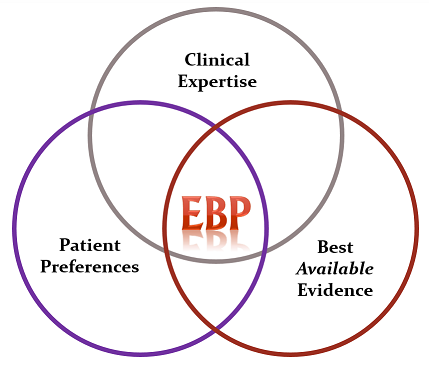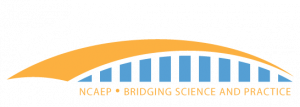An evidence-based practice is an instructional/intervention procedure or set of procedures for which researchers have provided an acceptable level of research that shows the practice produces positive outcomes for children, youth, and/or adults with ASD.
The above definition refers to specific practices such as prompting, reinforcement, social stories, or visual supports. In the English language, we think of these as nouns. These practices would appear in the lower right circle of the figure below.
One can also view evidence-based practice as a process of action. In the English language, we can think of this as a verb. This definition is more aligned with the original concept that arose from the evidence-based medicine movement. That is:
“Evidence-based medicine (EBM) requires the integration of the best research evidence with our clinical expertise and our patient’s unique values and circumstances.”
— David Sackett, 1996

Note that this approach gives equal emphasis to:
- the unique factors regarding a particular patient or population
- the wishes and values of the patient
- the best evidence available from the research, and the clinical expertise of the practitioner
(used with permission from University of South Florida Library Site– http://guides.lib.usf.edu/ebp )

